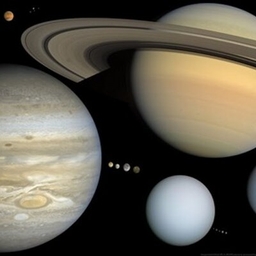
Articles
-
1 week ago |
universetoday.com | Evan Gough
Regular matter is properly called baryonic matter. It's made of baryons, which are mostly protons and neutrons (but not electrons). Baryons make up the matter we interact with in everyday life, including our own bodies. Baryonic matter makes up about 5% of the Universe, while dark matter (27%) and dark energy (68%) make up the rest, according to the standard cosmological model, Lambda CDM. However, some of the Universe's baryonic matter has been missing, or unaccounted for.
-
1 week ago |
phys.org | Evan Gough |Lisa Lock |Andrew Zinin
As different nations begin conducting operations on the lunar surface, humanity's penchant for geopolitical struggles will likely be along for the ride. Tension between nations and/or corporations could grow. There are few rules and treaties that can calm this potential rising tension. What kinds of conflict might erupt and how can it be prevented?
-
1 week ago |
universetoday.com | Evan Gough
As different nations begin conducting operations on the lunar surface, humanity's penchant for geopolitical struggles will likely be along for the ride. Tension between nations and/or corporations could grow. There are few rules and treaties that can calm this potential rising tension. What kinds of conflict might erupt and how can it be prevented? Humans have shown an ineptness when it comes to dividing things fairly.
-
1 week ago |
phys.org | Evan Gough |Lisa Lock |Robert Egan
Hycean worlds are also called ocean worlds. They're planets covered in oceans that also have thick hydrogen atmospheres. There are no confirmed hycean worlds but many candidates. Even though they're only candidates so far, researchers are curious about their habitability. New research examines the role tidal heating plays in their potential habitability.
-
1 week ago |
universetoday.com | Evan Gough
Star formation peaked during the Cosmic Noon, which spanned from 10 to 12 billion years ago. During Cosmic Noon, star formation was 10 to 100 times greater than it is now. New research shows that a particular class of galaxy was experiencing its first intense burst of star formation during this time. Were these galaxies the progenitors of galaxies like the Milky Way?
Try JournoFinder For Free
Search and contact over 1M+ journalist profiles, browse 100M+ articles, and unlock powerful PR tools.
Start Your 7-Day Free Trial →X (formerly Twitter)
- Followers
- 173
- Tweets
- 70
- DMs Open
- No